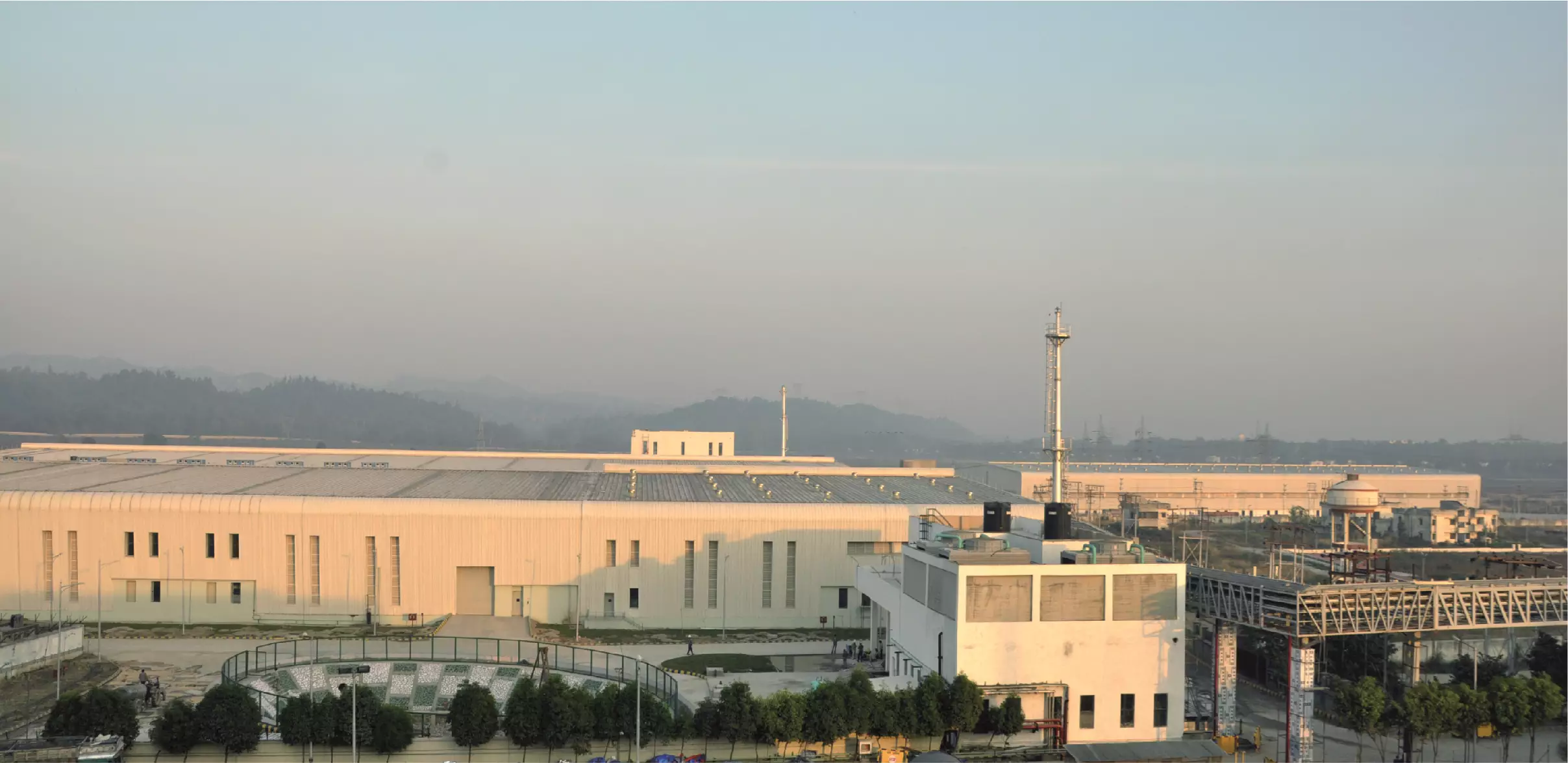R Senguttuvan: Our choice of technology has been with a futuristic outlook
ITC’s packaging division converts more than 70,000 tpa of paper, paperboard and laminates. Set up in 1925, the packaging major has factories in Munger, Haridwar and Tiruvottiyur. Sriraam Selvam talks, R Senguttuvan, the CEO of the PrintWeek Company of the Year 2019
28 Dec 2020 | By PrintWeek Team
Q: Congratulations for the PrintWeek Company of the Year Award. A proud achievement. Your response?
A: We are delighted that PrintWeek has recognised our contribution to the industry. It gives us added responsibility to live up to the expectations, take the business forward and maintain leadership position in the packaging segment. As one of the oldest companies in the packaging industry, we have travelled far with our focus on providing contemporary packaging solutions to customers in different segments and will continue to deliver reliable, sustainable, and innovative packaging.
Q: ITC has made significant investments in building factories plus putting a lot of capital to work. What have been the highlights of 2019?
A: ITC has always believed in investing in state-of-the-art cutting-edge technology keeping a long term perspective and providing customised solutions with superior technology and quality.
Our choice of technology has always been with a futuristic outlook that will benefit the customers not only in the short term but also in the long term.
Q: In terms of technology, what is your company aiming to do in 2020 (the Drupa + Interpack year)?
A: We are looking at adopting Industry 4.0 through automation and digital technologies into our packaging lines for improved efficiencies and faster turnaround. We are also progressing with Robotic Process Automation (RPA) opportunities for improved alignment between our manufacturing, sales team, and customer factories.
At Drupa 2020 and upcoming exhibitions, we hope to see mature hybrid presses (digital + conventional Pprinting with value additions) to get the best of both worlds into our offerings. This will enable large-scale production of personalised packaging – “Mass Customisation”. The other area of interest is sustainable packaging solutions with prime focus on a greener environment.
Q: Over the past two decades you have been creating a packaging ecosystem in India. In what way have you deepened some of the relationships with the FMCG biggies and food industry majors in India? What is your assessment about the emergence of large domestic brands such as Haldiram’s, Balaji and Patanjali and how are they disrupting the market?
A: The packaging business has engaged closely with major FMCG companies for their packaging needs and has been offering differentiated solutions developed in house with technology that enables faster turnaround, consistent quality and superior performance at customers’ end. The emergence of national and regional brands has always provided a challenge for packaging companies as they have to address shorter runs, quicker turnarounds and frequent design changes.
It has been a healthy disruption and provides an opportunity for those who are nimble footed to garner a higher business share. The competition is growing amongst companies and geographical presence gives an added strength for ITC Packaging to expand its customer base.
(L-r) R Senguttuvan of ITC, Zac Hollis of Škoda Auto India and Hormazd Sorabjee of Autocar
Q: ITC’s cross-functional Product Introduction Process (PIP) team has been an integral part of its success story with several innovations in terms of design and implementation approaches emanating from them. This is a consumer-oriented approach. How has this team reaped dividends for you?
A: PIP team pioneers packaging innovations. The cross functional team uses a unique process to pilot the client’s packaging requirements through its manufacturing system. This process has helped enhance the look and feel of many leading brands. The centralised team operating from Chennai integrates design and development needs of all the units to ensure seamless knowledge transfer required for executing right first time.
I feel, the responsibility of recurring business lies with abilities of manufacturing teams while new customer development and additions to business portfolio is only possible with a strong product development team working with customers’ R&D and brand teams. To that extent our PIP team along with marketing have been tapping new business opportunities with a deeper engagement with customers to understand their stated and unstated packaging needs. It is pertinent to note that many of our innovations have won World Star, Asia Star and India Star awards, thereby reinforcing the excellence in product development.
Addionally, some of our processes have been patented to create exclusivity for our customers.
Q: ITC recently received the Dow 2019 Global Packaging Innovations Awards for its breathable wheat flour pack with air release control design for Aashirvaad Atta. It is fascinating to see that beyond the big business, your team is creating new packaging products that are built specifically for the Indian market. How does ITC view innovations?
A: Innovation is one of the key business drivers for the packaging business and a prime business metric that is reviewed by the top management team periodically. This has spurred an innovation-driven work culture which cuts across all areas of operation. Specific to product innovation, there’s the ‘Breathable Wheat Flour Pack’ with air release control which besides strengthening the packaging, prevents the ingress of pests into the product. This superior packaging solution has introduced consistent micro-holes which prevents bursting and infestation, extends shelf life and allows the pack to withstand harsh logistics conditions. This packaging will greatly benefit the wheat supply chain and ultimately the consumer.
It is heartening that this breakthrough innovation has been selected for the prestigious Dow 2019 Global Packaging Innovations Awards. Whatever be the end use industry, there is a continuous focus on innovations in packaging which could be two-fold – one at a higher end involving R&D in materials/alternative forms of packaging and another which is low-cost innovation for quick hit results using value addition. We continue to work on both of them as per the needs of our customers.
Q: ITC has implemented several sustainable measures in the print and packaging unit in Chennai which includes energy conservation projects, renewable-wind energy plant, water conservation projects, recycling projects to handle waste and complying all social norms. What has impressed us is how all the workers are 100% trained and follow global standards for trainings. Can you share more information?
A: We have set up a 15+ MW windmill farm which currently caters to the Chennai plant’s electricity requirements . We are also increasing our foot print in renewable energy with a solar plant in Tamil Nadu. All our paper waste goes back to our paper mills for recycling, helping us to be a solid waste recycling positive company. Many other initiatives such as rainwater harvesting, water recycling etc have been undertaken to conserve water.
We would like to highlight that our initiatives in rainwater harvesting were undertaken much before it became a statutory requirement. We have a robust training process of Lean, 5S and Waste Management, covering the entire workforce including the managers in all the Units. Many continual improvement projects involving workmen and technical staff have enabled improve work practices on the shopfloor and resulted in measurable benefits to the organisation.
ITC Packaging has also been certified to many quality standards and scored highly in several customer audits.

ITC Packaging and Printing Division (Haridwar plant)
Q: Markets, they say, are always lagging indicators. How does a packaging converter stay ahead in the tech business where it is not about the now but next? For example, is flexo the dark horse for the future? (Currently, 75% of carton packaging is litho printed, 16% gravure, while 76% corrugated packaging is flexo printed)
A: ITC continues to track customer needs and future market opportunities and invest ahead of the curve.
Anticipating the growth in shelf-ready packaging, we have invested in a Bobst corrugated flexo printing machine with inline die-cutting to offer a large-format flexo print on fluted board.
We have also created a design centre which showcases products and technology that enables us to create an environment where customers can engage extensively with our team and work on creative designs and packaging concepts. Ultimately, packaging development is about anticipating customer needs well in advance and investing in right technologies – that is the way convertors can stay ahead of competition and differentiate themselves.
Apart from domestic customers, ITC maps the emerging packaging scenario across global markets through its interactions with members of the International Packaging Group (IPG) and International Flexible Packaging Network (IFPN), both being associations of carton manufactures and flexible packaging manufacturers, respectively.
Q: Efficiency today has become very critical. One converter was mentioning that they have an in-house consultant from a hospital and diagnostic care in order to improve efficiency. Can you cite a couple of small but common-sense system tweaks at ITC which have reaped huge benefits?
A: We follow the Overall Equipment Effectiveness (OEE) improvement approach in all our production lines in order to continuously improve our efficiencies. In addition, we have Employee Suggestion
Scheme to encourage suggestions from employees to propose improvement actions. We have also instituted processes to convert good suggestions to Kaizen initiatives and support them in implementation. We conduct training programmes through external subject matter experts as part of our skill development plan.
The nature of our business depends on generating internal efficiencies so as to remain competitive in the market while offering quality products. Some of the key initiatives using the lean methodology include - 5S, quick changeovers and reduction of waste.
Q: Will eCommerce significantly alter the product packaging requirement? What are the trends – and what do you foresee?
A: While eCommerce industry supply chain is more controlled than the traditional supply chain which requires higher specifications especially due to rough handling, there may be differences in product packaging need. However, at present not many products are exclusively made for online retail.
Online retail is an emerging trend in India, whereas it is a more mature mode of sales platform in developed countries. Considering the Indian retail scenario, it may take more time for the market to move from wholesale to online retailing. As our business is focussed on responding to emerging market needs, we have strategic plans to deliver packaging in an eCommerce scenario.
Q: And finally, where do you see ITC Packaging & Printing over the next ten years? What is your vision?
A: In an increasingly competitive environment of capturing shelf space and consumer engagement, ITC Packaging made an early start and worked with customers to introduce several new features and special effects across print and value addition processes.
We continue to engage in new product development, deploy cutting edge technology, focus on operational efficiencies and provide innovations through science-based R&D for future growth.
In an increasingly environment conscious world, we are also working on sustainable & recyclable solutions in packaging. We are focussing on several futuristic solutions, one of them being paper-based food packaging.
ITC will endeavour to be the market leader in our chosen segments in packaging. ITC has always given importance to sustainable packaging and several innovative options have been delivered in the market to support the cause of national priorities and our commitment to responsible sourcing, conversion, and waste management.
Our processes – people, product, materials, and technology are harnessed to give products that fulfil customer expectations with stakeholder responsibility of protecting the environment.n













 See All
See All